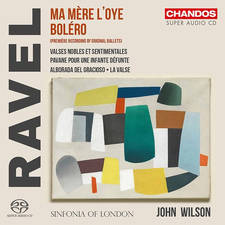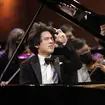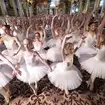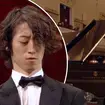The Full Works Concert - Tuesday 15 October 2013
Classical giants Mozart and Beethoven are on the menu tonight.
Carl Maria von Weber dedicated his Invitation to the Dance - which kicks off tonight's concert - to his wife Caroline after they had been married only a few months. He labelled the work "rondeau brillante", and wrote it while also writing his opera Der Freischütz. Uniquely, it's the first concert waltz to be written - that is, the first work in waltz form meant for listening rather than for dancing. The piece was part of the repertoire of Franz Liszt and many other pianists and has been recorded by many great artists.
Written to be performed by the composer, Mozart's Piano Concerto No. 19 in F is occasionally known as the "second coronation concerto" because he played it on the occasion of the coronation of Leopold II in Frankfurt in October 1790. It's been described as 'athletic', combining grace with vigour.
Marquez's Danzon No.2 for orchestra is probably the most popular piece of Mexican contemporary classical music. The Danzon has its origins in Cuba but is a very important part of the folklore of the Mexican state of Veracruz. Marquez got his inspiration for the piece while visiting a ballroom in Veracruz.
Samuel Wesley mixed elements of the Baroque and Classical styles in an effective way in his Violin Concerto No.2 of 1781. It is the second of seven violin concertos he wrote between 1779 and 1785 for the concerts he organized with his brother Charles in the family house in Chesterfield Street, Marylebone; Wesley was just 15 at the time. It contains some extremely taxing solo writing, with high positions and elaborate double stops, while the first movement is an assured example of mature Classical concerto form—though, at more than 350 bars, it also shows that he had not yet learned when to stop!
Beethoven's Second Symphony was mostly written during 1802, a time when his deafness was becoming more apparent and he began to realize that it might be incurable. No one present at the first performance of the symphony on 5 April 1803 could have expected the grandeur, tension and violence of the piece. Beethoven was beginning to flex his muscles and create the kind of symphonies which would revolutionise the genre. The scherzo and the finale are filled with musical jokes, which shocked the sensibilities of many contemporary critics. One famously wrote that it was 'a hideously writhing, wounded dragon that refuses to die, but writhing in its last agonies and, in the fourth movement, bleeding to death.'
Carl Maria von Weber: Invitation to the Dance
Richard Bonynge conducts the National Philharmonic Orchestra
Wolfgang Amadeus Mozart: Piano Concerto No.19 in F major
Piano: Richard Goode
Orpheus Chamber Orchestra
Arturo Marquez: Danzon No.2
Gustavo Dudamel conducts the Simon Bolivar Orchestra of Venezuela
Samuel Wesley: Violin Concerto No.2 in D major
Violin: Elizabeth Wallfisch
Peter Holman conducts the Parley of Instruments
Ludwig van Beethoven: Symphony No.2 in D major
Bernard Haitink conducts the Concertgebouw Orchestra, Amsterdam













